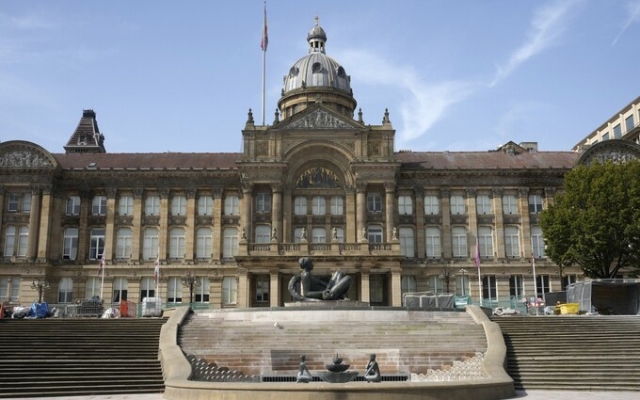 Birmingham City Council, Europe's largest local authority, declared bankruptcy last year. Photo: Christopher Furlong/Getty Images Europe
Birmingham City Council, Europe's largest local authority, declared bankruptcy last year. Photo: Christopher Furlong/Getty Images Europe
Four out of 10 Councils in England risk going bust within the next five years as the local authority funding crisis spirals out of control, data has shown.
Rising costs of social security means 40% of local authorities face financial collapse, Grant Thornton said, which she warned could trigger a significant rise in council tax bills.
Councils are facing a toxic cocktail of long-term government funding cuts and growing demand for social care and children's housing.
>
Since 2021, six councils have issued section 114 notices, meaning they have declared themselves effectively bankrupt. with Birmingham City Council and Nottingham City Council the latest to submit notices.
Philip Woolley of Grant Thornton UK said there were problems as the number of councils grew rapidly as they faced a £9 billion budget black hole.
Last year, one in six councils in England were on the brink of financial collapse, defined as having cash reserves of 5% or less than their total revenue expenditure. This year it's one in five, Mr Woolley said.
In 2025, that figure will be 25%, rising to 40% over the next five years, Grant Thornton said. It means residents in almost 130 local authorities across the country could suffer significant service cuts or higher tax bills.
The Local Government Association warned late last year that half of council leaders were not confident they would will do. have sufficient funds to meet their legal obligations in 2024/25.
Mr Woolley said: “The first batch of failures came from councils that were poorly managed. Now well-run councils are also under pressure.
“The funding model is broken.” In the decade leading up to 2020, central government funding for councils fell by two-fifths in real terms.
At the same time, the Covid lockdown has created huge demand for social care for children and adults, and the crisis in the rental market has pushed council growth. ' housing costs.
Since 2019, council spending on each of these services has jumped by about 30%. As rents continue to rise, Grant Thornton expects per capita council housing costs to increase by a further 16% by 2028/29.
In areas where council finances are failing, the government may be forced to lift restrictions for council tax. will rise to help local authorities offset their costs, Mr Woolley said.
The government sets a limit on the amount local authorities can charge in council tax. In 2024/25, councils can increase bills by 3%, or 5% if they have social security responsibilities, without the need for a local referendum.
But the government has allowed failed councils to make much larger increases. In 2023, Croydon Council, which passed Bylaw 114 in November 2022, was allowed to increase council tax by 15 per cent.
In December, Housing Secretary Michael Gove told Thurrock Council, Slough Borough Council and Woking Borough Council that issued Section 114 that they could increase spending beyond the cap. Woking will be allowed to increase bills by up to 10 per cent this year.
Residents will also see their services cut, Mr Woolley warned: “More discretionary services will go, such as leisure, road services, libraries.
Councillor Sean Davies, chairman of the Local Government Association, said no council in the country was immune from the growing risks to the financial stability of councils.
He said: “It is unthinkable that the Government has failed to provide desperately needed new funding for local services in 2024/25.
“The Government urgently needs to address the growing financial crisis facing councils.”
A Government spokesman said: “Ultimately councils are responsible for their own finances, but we remain willing to talk to anyone who is concerned about their financial situation.”
“We recognize that they are facing challenges and that is why we have announced o A £64 billion funding package (a real increase of 6.5%) to ensure they can continue to deliver value alongside our collective efforts to level up.»
























































Свежие комментарии